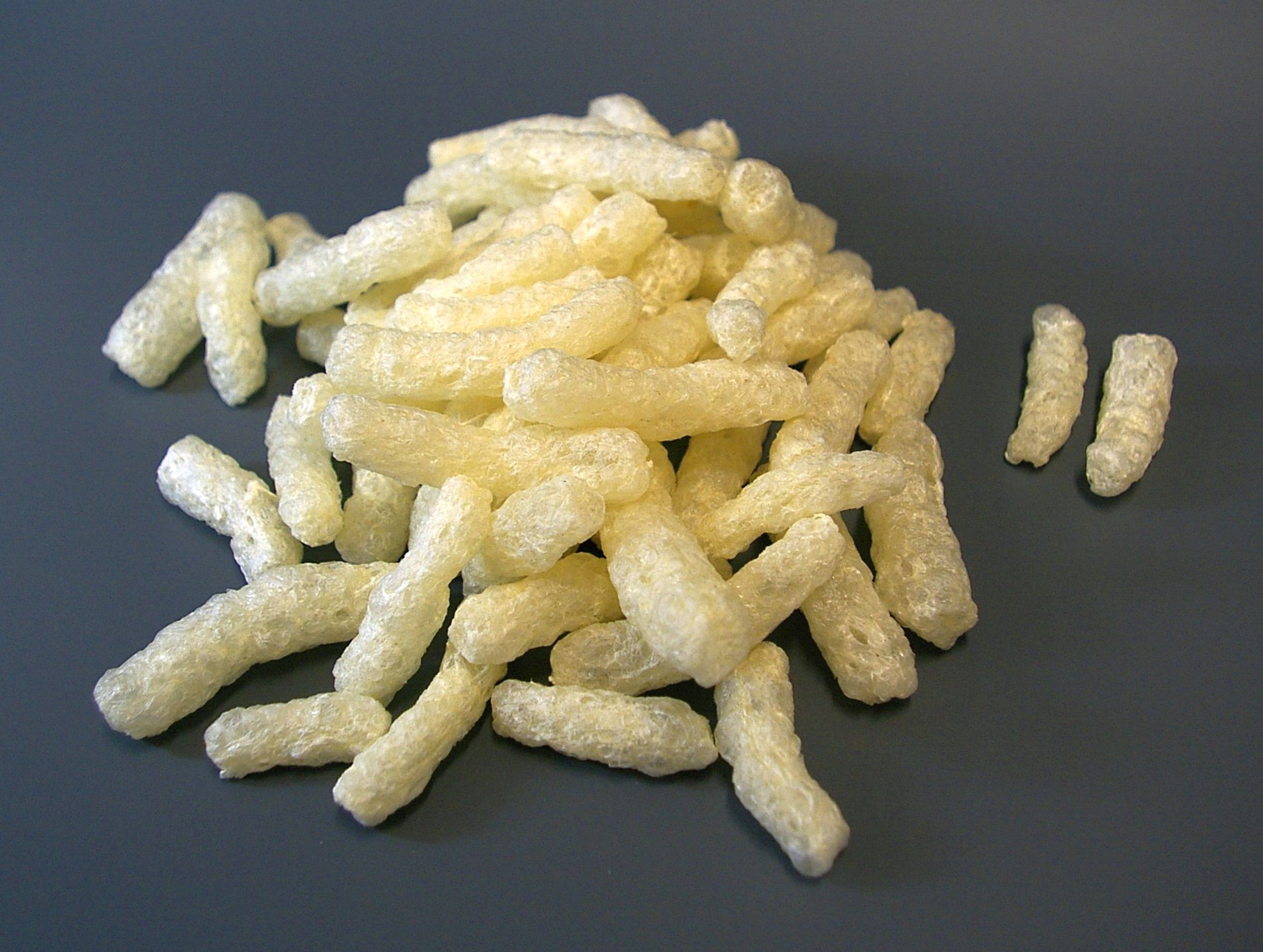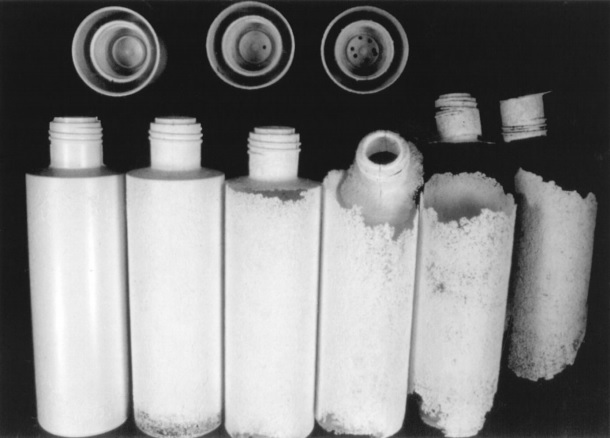
Bioplastics to the rescue!
In our current society, it is almost impossible to imagine a life without plastic. As a result of its long
life span and versatility, the material is used for a wide variety of applications(3). The use of plastic
has increased significantly from around 5 million tonnes in the '50s to about 300 million tonnes in
2014(6,15).
Much of this plastic is used for the food and product packaging we use every single day in
our cities. Since the regular petroleum-based plastic has a long lifespan, the amount of waste in
the landfills increases every year.
The large consumption of plastic has a negative effect on our environment.(5,7) Last month's article,
'Plastic soup, anyone?', detailed how microplastics in particular are detrimental. Not only is the
enormous waste stream damaging the environment, the chemicals used during the production
process are also harmful. Furthermore, regular plastic requires petroleum as a resource. The use
of this fossil fuel contributes to CO2 emissions, which cause anthropogenic forcing on our climate.
Developing a sustainable alternative has therefore received a great deal of attention in recent years.
Bioplastics are an example of this. Bioplastics are plastic materials consisting of polymers
produced from biomass or which are biodegradable. Generally, they have similar properties to
regular plastics, so bioplastics can be used for the same applications.(1,4,6,10)
Many different types of bioplastics exist, just as there are many types of regular plastic. These
bioplastics mainly differ in raw materials used and their production methods. Roughly, bioplastics can
be divided into four groups: first, bioplastics which consist of natural polymers. Secondly, bioplastics
of natural monomers. Thirdly, bioplastics which are produced by microorganisms, and finally,
bioplastics made from fossil fuels.(1,4)
Bioplastics from natural polymers
The raw material for these bioplastics is directly harvested from plant material
known examples are bioplastic from starch and cellulose. For example, the foams (figure 1), which
are often found in boxes to protect a new TV or other electronics, are regularly made of starch.
About 50% of starch bioplastic is used for producing these types of foams.(4)

Figure 1: Packaging foam made from thermoplastic starch. Source.
Starch
Starch consists of a mixture of two polysaccharides, amylose (10-25%) and amylopectin (75-90%).(6)
Fabrication methos used for conventional plastics can also be used in processing starch, which
promotes the attractiveness of this material.(17) The starch then, is made into a semi-finished product
that is widely applicable, called TPS for ThermoPlastic Starch. Even though starch dissolves in water
and lacks the strength and elasticity that is expected of plastic(6),coatings are developed to make the
material more promising. Furthermore, TPS can be mixed with regular plastic or plasticisers could be
added to make the material less water-sensitive and more flexible. Starch bioplastics have some
specific features. Their permeability to gases such as CO2 and oxygen is relatively low, while water
vapour diffuses through the material just fine. As a result, starch bioplastics are very suitable for the
packaging of food like vegetables or fruit.(4,17)
Cellulose
Cellulose is the most abundant natural polymer in the world6
have a high temperature stability. However, cellulose is a difficult material to process due to its
poor solubility and high melting temperature. By chemical modification raw cellulose can
eventually be used for the production of bioplastics. Unfortunately, most of these bioplastics are not
completely biodegradable. Typical properties of cellulose bioplastics are transparency and a high
water resistance. Food packaging would be a possible application of cellulose bioplastics because
of their strength, moisture resistance capabilities and low production costs.(4,6,14)
Bioplastics from natural monomers
The polymers of bioplastic can also be built from monomers. The most commonly used bioplastic in
this category is polylactic acid (PLA). It is produced by fermenting sugars, starch or lactic acid derived
from various crops4. Since lactic acid occurs in both the D- and L-conformation, different materials
can be formed after polymerisation. The isomers used influence the material's properties. Poly-D-lactic
acid, and mixtures containing predominantly this isomer are easily biodegradable, while
polylactic acid of the L isomer is hardly biodegradable.(4,14)
PLA is transparent, waterproof and strong, making this a good candidate for packaging, especially
bottles. PLA can also be processed into a variety of materials, from foils to foam and fiber. In
addition to packaging material, PLA can be used for medical purposes, since lactic acid occurs in our
bodies naturally. To illustrate this application, PLA is already used to make dissolvable stitches.The
biggest drawback aside from its price is that the material can be brittle.(4,6)
Bioplastics made by microorganisms
Bioplastics produced by microorganisms hold great potential for the future. Polyhydroxyalkanoates
(PHA) are the best known materials in this category.(6)
Different bacteria are able to synthesise PHA's. These polymers are then stored in granules in the
cell as a food reserve for harsh conditions. Up to 90% of the cell dry weight may consist of these
granules. PHA's can be extracted and further processed into a bioplastic.(11,12,13)) To increase the
sustainability of this material, agricultural waste and waste water can be used as a feeding stock for
the bacteria instead of glucose.(2,9) With the help of genetic modification, the production capacity of
bacteria has increased in recent years.(4,11)
PHA's have a wide variety of properties. From the rigid thermoplastic polyhydroxybutyrate (PHB)
(figure 2) to more rubber-like flexible materials. In addition, PHA's have a low permeability to water
and oxygen. Due to the high production cost, many applications are not (yet) economically viable.(4,6,15)
Since the material is not harmful to our health, medical applications are mainly an interesting
option.(8,11)

Figure 2: Degradation of bottles made of polyhydroxybutyrate (PHB) in sewage sludge, under aerobic
conditions at 20 degrees Celsius. From left to right the degradation is shown after 0,2,4,6,8 and 10 weeks.
Source
Bioplastics from fossil fuels
Even though it sounds contradicting bioplastics can also be produced from petroleum. These
materials are biodegradable due to the production process. An example is polycaprolactone (PCL).
The processing temperature is a bit lower compared to conventional plastic, but the rest of the
processing characteristics are comparable. PCL is largely used in combination with other bioplastics
such as starch to increase the moisture resistance. PCL has a flexibility and strength similar to
regular plastic. However, the oxygen and water permeability are higher than that of PET. Further,
by combining the material with other types of bioplastic, the range of applications can be increased.(4,6,14)
Different varieties of bioplastic have different effects on sustainability, and through mixing, coatings,
and plasticisers, much is possible. With regular petroleum‐based plastic in mind, bioplastics are
worth looking into for a better alternative. Nevertheless, decreasing consumption still trumps
improving the sustainabillity of production. So bring your own bag to the supermarket next time you
go grocery shopping!




